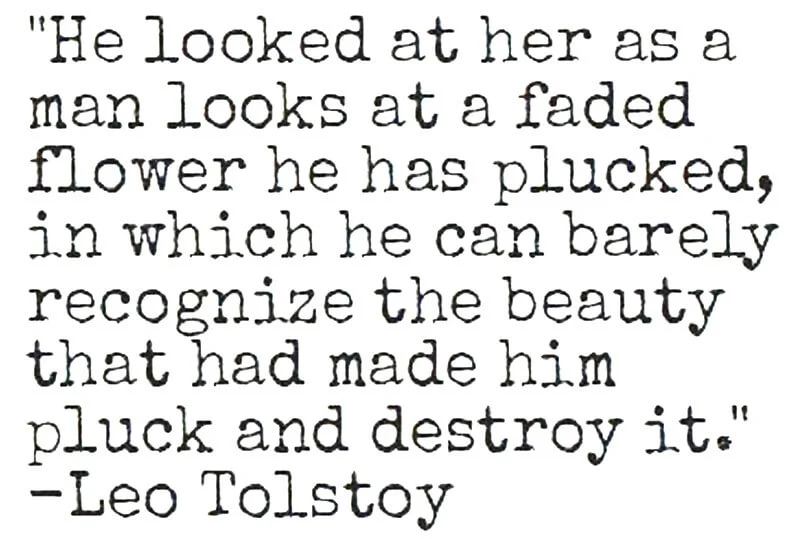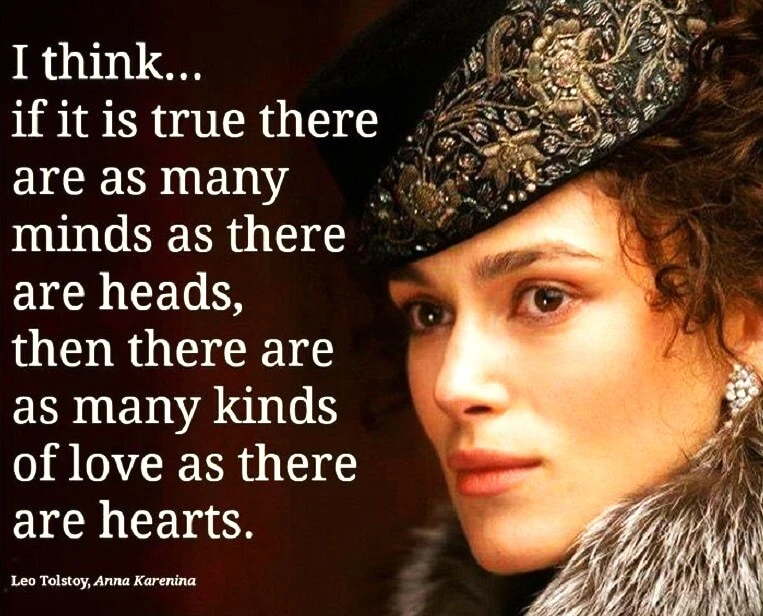Anna Karenina, written by the prolific Russian author Leo Tolstoy, stands as a monumental achievement in world literature. This timeless masterpiece, first published in serial installments from 1873 to 1877, continues to captivate readers with its intricate plot, compelling characters, and profound exploration of human nature.
| Name of PDF Original title | Anna Karenina PDF Анна Каренина |
|---|---|
| No Pages | 864 |
| Author | Leo Tolstoy |
| Originally Published | 1878 |
| Language | English |
| Genres | Novel, Fiction, literary realism |
| Size | 3.20 MB |
| Chek, latest edition |
Table of Contents
Plot Summary
Set in the backdrop of 19th-century Russia, Anna Karenina follows the lives of several interconnected characters, chief among them the eponymous Anna, a married aristocrat, and Count Vronsky, with whom she engages in a scandalous affair. As their illicit romance unfolds, the novel delves into themes of love, morality, and societal expectations, culminating in a tragic and unforgettable climax.

Themes in Anna Karenina
At its core, Anna Karenina grapples with complex themes that resonate across time and culture. Love and adultery are central motifs, as Anna’s forbidden passion for Vronsky sets her on a collision course with societal norms and personal morality. Additionally, the novel explores themes of social class and the rigid hierarchy of Russian society, as well as existential questions surrounding the meaning of life and individual agency.
Literary Style and Techniques
Tolstoy’s narrative prowess is on full display in Anna Karenina, which is characterized by its sweeping scope and richly detailed prose. The novel employs multiple narrative perspectives, offering insights into the thoughts and motivations of its diverse cast of characters. Furthermore, Tolstoy utilizes symbolism, such as the recurring motif of trains representing fate and inevitability, to imbue the story with layers of meaning.
Impact and Legacy
Since its publication, Anna Karenina has left an indelible mark on literature, inspiring countless adaptations across various media. Its profound exploration of human psychology and societal mores continues to resonate with readers and scholars alike, cementing its status as one of the greatest novels ever written.
Analysis of Main Characters
Anna Karenina herself emerges as a complex and tragic figure, torn between her desires and the constraints of her social position. Alexei Karenin, her husband, embodies the stifling conformity of Russian aristocracy, while Count Vronsky represents the allure of passion and freedom.
Critical Reception
While initially met with mixed reviews, Anna Karenina has since been hailed as a masterpiece of world literature. Critics have praised its psychological depth, narrative complexity, and keen social commentary, ensuring its enduring relevance in literary discourse.
Comparison with Other Works
In comparison to other Russian classics of the period, such as Fyodor Dostoevsky’s Crime and Punishment or Ivan Turgenev’s Fathers and Sons, Anna Karenina stands out for its expansive scope and panoramic depiction of society.
Historical Context
Against the backdrop of 19th-century Russia, Anna Karenina reflects the tumultuous political and social landscape of the era, offering insights into the lives of the Russian aristocracy and the burgeoning tensions that would ultimately lead to revolution.
Tolstoy’s Philosophy
Tolstoy’s own philosophical beliefs infuse the narrative of Anna Karenina, particularly his emphasis on the moral imperative of living an authentic and virtuous life. Through the experiences of its characters, the novel grapples with timeless questions of morality, spirituality, and the pursuit of meaning.
Contemporary Significance
Despite being set in a bygone era, Anna Karenina remains remarkably relevant to contemporary readers, offering profound insights into the complexities of human relationships, the nature of love, and the eternal struggle between duty and desire.
Adaptations and Pop Culture References
Over the years, Anna Karenina has been adapted into numerous films, stage productions, and even ballets, attesting to its enduring popularity and cultural resonance. Its influence can be felt across a wide array of media, from literature to film to fashion.
Discussion of Symbolism
Throughout Anna Karenina, Tolstoy employs symbolism to enrich the narrative and convey deeper layers of meaning. The recurring motif of trains, for example, serves as a metaphor for the inexorable march of fate, while the natural world often reflects the emotional states of the characters.

Contrast Between City and Country Life
One of the novel’s central dichotomies lies in the contrast between the urban sophistication of St. Petersburg and the idyllic simplicity of the Russian countryside. Through vivid descriptions and contrasting settings, Tolstoy highlights the tension between societal expectations and individual fulfillment.
About Book: Anna Karenina PDF Book Download by Leo Tolstoy
Now that this state of affairs had persisted for three days, not only the husband and wife but also every member of their household and family were acutely aware of it. Every individual in the house believed that living together made perfect sense and that the strangers who happened to cross paths in any inn shared more things in common than the Oblonsky family and household members.
The husband had not been home for three days, and the wife remained in her own room. The children misbehaved uncontrollably throughout the home; the English governess got into a fight with the housekeeper and asked a friend to keep an eye out for a new circumstance; the man-cook had left the previous day right before supper; the kitchen-maid and the coachman had issued warnings.
Being honest with himself was a quality that Stepan Arkadyevitch possessed. He could not fool himself into believing that his actions were regrettable. As a thirty-four-year-old guy who was attractive and prone to lust, he was unable to accept the reality that he was not in love with his wife, who was a year his junior and the mother of five living and two deceased children. Anna Karenina PDF Book Download
He only felt regret for not having been able to keep it a secret from his wife. However, he was sad for himself, his children, and his wife, and he felt the full strain of his situation. If he had known that his wife would be affected in this way by learning of his transgressions, perhaps he could have kept them a secret from her.
Though he had never given the matter much attention, he had a hazy idea that his wife had long since believed he was unfaithful to her and had chosen to ignore the truth. Anna Karenina PDF Book Download. He had even assumed that, as a tired, unattractive lady who was no longer young or attractive and who was only a good mother, she should, out of fairness, adopt a lenient stance.
After putting on his clothes, Stepan Arkadyevitch sprayed himself with perfume, undid his shirt handcuffs, placed his cigarettes, pocketbook, matches, and watch with its double chain and seals in his pockets, and shook out his handkerchief. Despite his discontent, he felt clean, fragrant, well, and at ease as he entered the dining room with a slight swing on each leg. Next to the coffee were letters and documents from the office.
He perused the correspondence. One came from a trader purchasing a forest on his wife’s land, and it was quite nasty. Selling this woodland was imperative, but discussions on the matter could not take place just now, not until he was at peace with his wife. The most disagreeable aspect of all was that his financial interests should be taken into consideration when deciding whether or not to reconcile with his wife.
Furthermore, he was saddened by the notion that he would be betrayed by his interests and try to make amends with his wife as a result of the forest sale. Anna Karenina PDF Book Once he had completed writing his letters, Stepan Arkadyevitch took the office papers near him, quickly glanced at two documents, jotted down a few comments with a large pencil, pushed the papers aside, and went to his coffee.
Dressed in a dressing jacket, Darya Alexandrovna had her once-luxurious and beautiful hair secured with hairpins at the nape of her neck. Her sunken face was marked by thinness, and her large, startled eyes stood out against the jumble of objects lying around the room. In front of an open bureau, she was taking something.
She halted at hearing her husband’s footsteps, glancing in the direction of the door and making a concerted effort to convey a stern and disdainful expression on her face. Because of his exceptional ability, Stepan Arkadyevitch had an easy time learning in school; nevertheless, because he was a naughty and indolent student, he was placed among the lowest in his class.
Despite leading a sedentary lifestyle, having a lower rank in the military, and being relatively young, he held the prestigious and well-paying job of president of a government board in Moscow. Anna Karenina PDF Book Alexey Alexandrovitch Karenin, the husband of his sister Anna, who occupied a prominent position in the government whose department the Moscow office was under, had given him this role.
However, if Karenin had not given his brother-in-law this position, Stiva Oblonsky would have obtained this position or one similar to it through a hundred other individuals—brothers, sisters, cousins, uncles, and aunts—as well as the salary of six thousand dollars that was absolutely necessary for them. This is because his affairs, despite his wife’s substantial property, were in an embarrassing state.
Stepan Arkadyevitch has acquaintances and relatives in half of Moscow and Petersburg. Levin was incensed at himself for blushing when Oblonsky questioned him about what had brought him to the village. Despite the fact that he had come specifically to make an offer to his sister-in-law, Levin was unable to respond with that statement.

The ancient, aristocratic Moscow families, the Levin and Shtcherbatsky families, had always been close and cordial. This closeness intensified even more when Levin was a student. Anna Karenina PDF Book Together with Kitty and Dolly’s younger brother, Prince Shtcherbatsky, he had prepared for the university and joined at the same time.
Levin used to visit the Shtcherbatskys frequently back then, and he fell in love with their home. Odd as it may seem, Konstantin Levin was in love—especially with the female member of the household—with the family. After taking an early train to Moscow, Levin stayed at the home of Koznishev, his older half-brother.
Following his clothes change, he descended to his brother’s study with the intention of speaking with him right away about the reason for his visit and seeking his counsel; however, his brother was not by himself. Accompanying him was a renowned philosophy professor who had traveled from Harkov specifically to resolve a disagreement that had developed between them on a crucial philosophical issue.
The professor continued his fervent anti-materialist campaign. Having been interested in this cause, Sergey Koznishev had written the professor a letter outlining his concerns after reading his most recent article. Anna Karenina PDF He charged that the lecturer was giving in too much to the materialists. And the professor had shown up right away to settle the dispute.
Feeling his heart pounding, Levin exited the hired sledge at the Zoological Gardens at four o’clock, certain that she would be there because he had spotted the Shtcherbatskys’ carriage at the gate. He then followed the road to the frozen mounds and the skating area. It was a clear, chilly day. In the approach stood rows of carriages, sledges, drivers, and police officers. Numerous elegantly attired individuals, their sunhats shining brightly, thronged the entryway and the tidy little pathways that connected the small buildings ornamented with Russian-style carvings.
Conclusion to Anna Karenina PDF | Anna Karenina Summary
In summary, Anna Karenina stands as a towering achievement in world literature, with its timeless themes and unforgettable characters continuing to resonate with readers of all ages. From its incisive social commentary to its profound exploration of the human condition, Tolstoy’s masterpiece remains as relevant and compelling today as it was over a century ago.
FAQs about Anna Karenina PDF
Is Anna Karenina based on a true story?
While Anna Karenina is a work of fiction, it is inspired by real-life events and societal dynamics of 19th-century Russia.
What is the significance of the novel’s title?
The title character, Anna Karenina, serves as the focal point of the narrative, symbolizing the complexities of human desire and the consequences of societal constraints.
Why is Anna Karenina considered a classic?
Anna Karenina is revered as a classic due to its profound exploration of timeless themes, masterful storytelling, and enduring relevance to readers across generations.
How does Anna Karenina reflect the cultural context of 19th-century Russia?
The novel offers a vivid portrait of Russian society, depicting its class divisions, political tensions, and cultural norms with remarkable insight and authenticity.
What are some recommended adaptations of Anna Karenina for first-time readers?
Film adaptations directed by Joe Wright and Alexander Zarkhi are widely regarded as faithful and accessible interpretations of Tolstoy’s novel.



